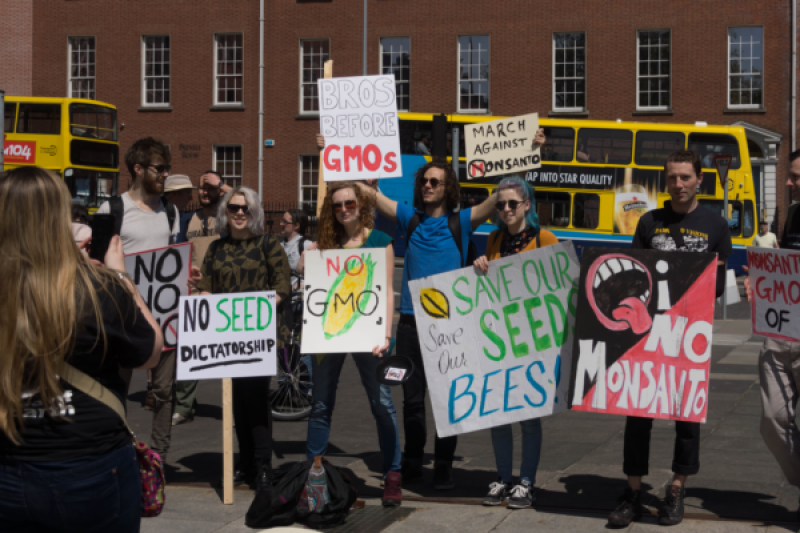But that hasn’t stopped state lawmakers from trying to pass anti-neonic legislation that is damaging to farmers, economies, and the environment. Already in 2023, at least six state legislatures, from Connecticut to California, have introduced “save-the-bees” legislation that would curtail or ban neonic use by growers and/or consumers inside state borders.
Why? Zealous environmental activist groups like the Natural Resources Defense Council have duped legislators and their constituents by convincing them that bees are dying in large numbers – the so-called “Bee-pocalypse” – and that neonicotinoids are to blame, that EPA is doing nothing about it, and that states must take the lead.
Most significant among these bills is New York’s Birds and Bees Protection Act, which would ban neonic-treated seeds for corn, soybean, and wheat growers, and also end neonic use by turfgrass professionals.
This regressive, anti-farming bill, currently on Gov. Kathy Hochul’s desk, ignores EPA’s findings that neonics are safe for plants, humans, animals, and the environment, when used as directed. Instead, the state legislature appears to have relied on a Cornell University report that is replete with equivocation and ambiguity. This statement in it is typical:
This risk assessment is intended to support evidence-based decisions, [but] we make no recommendations or policy prescriptions. Finding the ‘best policy’ or ‘best policies’ for neonicotinoid insecticides in New York will require thoughtful choices between competing priorities.
Moreover, much of the analysis doesn’t apply to New York agriculture, and it even downplays Cornell’s own research, which concluded from a large field study that up to 66% of a crop planted without neonic-treated seeds can suffer significant economic damage.
Neonics are a linchpin for agroecological practices on New York farms that use organic cattle manure for fertilizing soils and cover cropping, a sustainable practice that takes carbon out of the air, stores it in the soil, and reduces greenhouse gas emissions. These practices attract seed corn maggots, however, and neonics are the only viable option for treating them. Even Cornell’s own highly touted neonic replacement for farmers, diamides, are triple the cost of neonics.
Another significant bill, passed by the California legislature, directs the California Department of Pesticide Regulation (CDPR) to reevaluate neonics with the intention of curtailing their use in lawn and garden use. With the EPA, the federal government’s pesticide regulator, finishing its latest 15-year neonic risk assessment, California’s legislation is, at best, redundant.
Under intense political pressure, CDPR has already issued costly new neonic regulations that will go into effect in 2024. For just six of California’s 400-plus crops, revenue losses to growers are estimated to be in the range of $12-13 million. Production costs will spike – as much as 186.6% for growers of tomatoes; 73.8% for grapes; and upwards of 66.6% for citrus.
This costly bill has already proved damaging to farmers and the environment. Neonicotinoids have successfully lowered California’s dependence on less environmentally friendly insecticides. Thanks to neonics, the use of organophosphates decreased by 41.5%, from 1,900 tons of active ingredient applied in 2007 to 1,100 tons in 2016. The use of organophosphates will likely rise if neonic use is restricted.
Nevada lawmakers have already enacted a bill that, in part, requires growers to get permits from the state’s Department of Agriculture before applying neonicotinoids, adding an unnecessary state-based regulatory hurdle for neonic use that is redundant with EPA oversight, and whose permissiveness may rise or fall based on politics.
Only the EPA has a legal mandate to regulate pesticides across the United States. One of the most important reasons is so that state legislators don’t inadvertently hurt growers, consumers, and the environment by making decisions based on emotion or local politics rather than science. Misguided efforts by legislators to redefine pesticide regulation are lowering farmers’ incomes, sowing regulatory uncertainty, raising food costs, and leaving growers no choice but to resort to less environmentally friendly practices.
If legislators cared to investigate, they would find that bees are not, in fact, in dire straits at all. Managed honeybee hive numbers around the world have risen by nearly 26% in the last decade, from 81 million to 102 million. They would also find that the scientific consensus holds that varroa mites and climate change, not neonics, are the greatest threats to bee health. The levels of neonics in plant pollen and nectar are too low to harm bees when used as directed by EPA.
Even some environmentalists are reversing their Bee-pocalypse rhetoric, because, in an unobvious way, it’s actually hurting pollinators. Thanks to years of activists’ scaremongering, too many people are starting hives around their homes to “save the bees,” and these domesticated bees are causing pollinator starvation by usurping pollen and nectar from wild bees, moths, and monarch butterflies.
Fortunately, governors such as Hochul can still heed the regulatory experts and use their power to veto their respective states’ misguided regulation. I’m not holding my breath.
Henry I. Miller, a physician and molecular biologist, is the Glenn Swogger Distinguished Fellow at the American Council on Science and Health. Follow Henry on X @henryimiller
A version of this article was originally posted at Henry Miller’s Blog and is reposted here with permission. Any reposting should credit both the GLP and original article.































